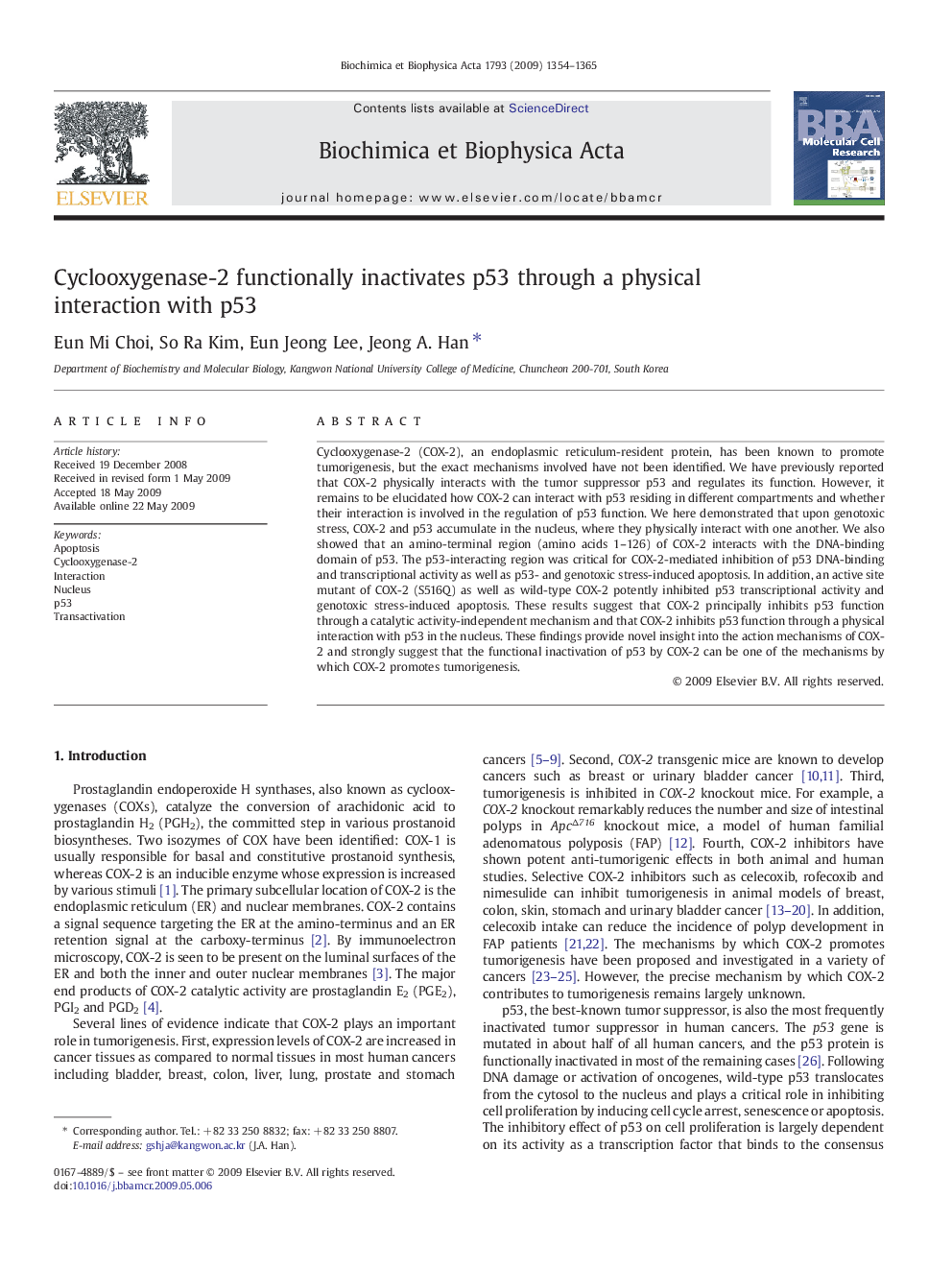| Article ID | Journal | Published Year | Pages | File Type |
|---|---|---|---|---|
| 1951129 | Biochimica et Biophysica Acta (BBA) - Molecular Cell Research | 2009 | 12 Pages |
Cyclooxygenase-2 (COX-2), an endoplasmic reticulum-resident protein, has been known to promote tumorigenesis, but the exact mechanisms involved have not been identified. We have previously reported that COX-2 physically interacts with the tumor suppressor p53 and regulates its function. However, it remains to be elucidated how COX-2 can interact with p53 residing in different compartments and whether their interaction is involved in the regulation of p53 function. We here demonstrated that upon genotoxic stress, COX-2 and p53 accumulate in the nucleus, where they physically interact with one another. We also showed that an amino-terminal region (amino acids 1–126) of COX-2 interacts with the DNA-binding domain of p53. The p53-interacting region was critical for COX-2-mediated inhibition of p53 DNA-binding and transcriptional activity as well as p53- and genotoxic stress-induced apoptosis. In addition, an active site mutant of COX-2 (S516Q) as well as wild-type COX-2 potently inhibited p53 transcriptional activity and genotoxic stress-induced apoptosis. These results suggest that COX-2 principally inhibits p53 function through a catalytic activity-independent mechanism and that COX-2 inhibits p53 function through a physical interaction with p53 in the nucleus. These findings provide novel insight into the action mechanisms of COX-2 and strongly suggest that the functional inactivation of p53 by COX-2 can be one of the mechanisms by which COX-2 promotes tumorigenesis.
